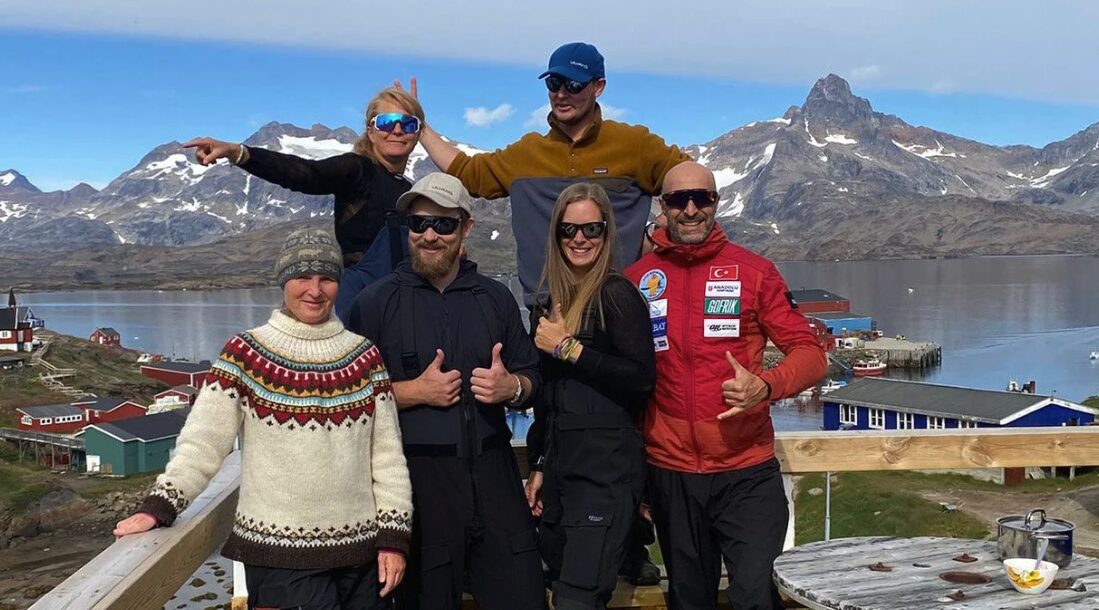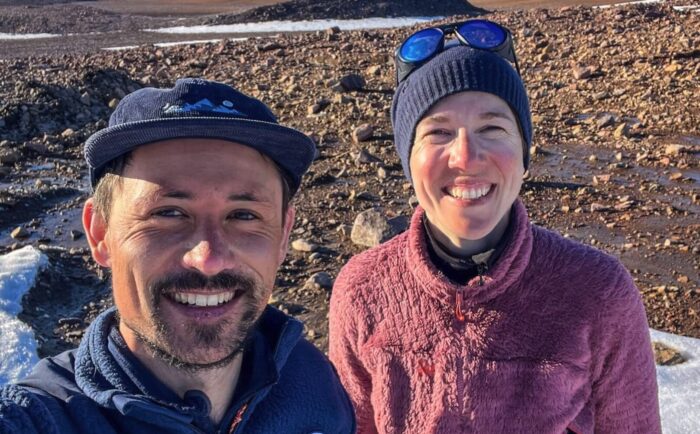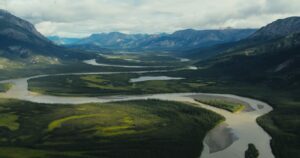It’s never entirely summer in Greenland, at least not by southern standards, and several ski expeditions are heading onto the Ice Sheet with their sleds. Summer and early fall combine challenging meltwater, fractured terrain, shifting winds, and sudden cold snaps.
In mid-August, the lower icefalls on the east coast churn with streams and rivers. Progress here can be slow, with deep meltwater channels, rough ice, and crevasses dictating the route. Higher up, snow cover evens out, and teams can make better time as they ski toward the high point of the Ice Sheet. But winds remain fickle under the influence of colliding weather systems from Canada and the Iceland–Greenland corridor.
By late August, the first cold fronts arrive. Rivers contract into trickles, and lakes on the inland ice begin to freeze. On the descent to the west coast, the ice becomes more fractured. Meltwater gullies and sheer-sided riverbeds, some 15m deep, turn travel into a slow puzzle. By mid-September, days are markedly short, the Ice Sheet begins to lock down for winter, and the season for crossings closes.

In the spirit of Nansen
Crossing the Greenland Ice Sheet in the fall dates back to the very origins of Arctic sledding, with Fridtjof Nansen’s pioneering 1888 summer-fall expedition. This year, Kathinka Gyllenhammar of Ousland Explorers is guiding five skiers along the Nansen route from Isortoq to Nuuk. Among the clients is Ali Riza, who earlier this year became the first Turk to ski to the South Pole.
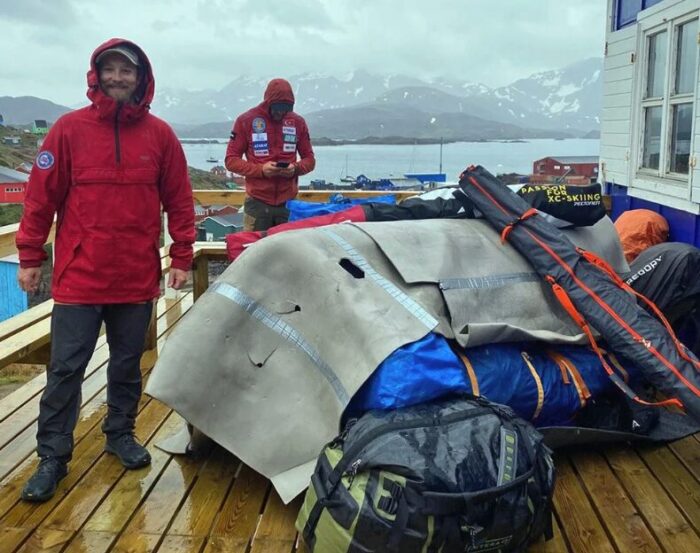
In Greenland, summer still means skis, not shorts. An expedition arrives on the east coast. Photo: Ousland Explorers
The Ousland team spent the past week in Tasiilaq preparing food, fuel, and gear, and checking stoves and rifles. On August 14, they left by boat under clearing skies. Once ashore in Isortoq, they hauled loads through steady rain to the access glaciers. By evening, they had reached the Ice Sheet.
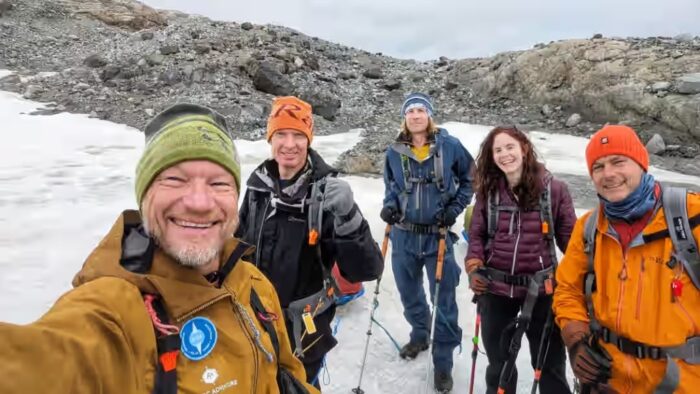
The Arctic Adventure Team, with guide Henk-Jan Geel, far left. Photo: https://arcticadventure.nl
A second group is also starting from Isortoq. Four Arctic Adventure clients led by Henk-Jan Geel will attempt to ski to Kangerlussuaq. After a windy morning boat ride from Tasiilaq, they arrived at Isortoq, then carried 400kg of equipment over rocky ground to the Ice Sheet. Along the way, they bumped into other expeditions, including Gyllenhammar’s team. They are now established on the ice and preparing to move further inland.
An independent journey
The third group of skiers is an independent three-man team of Jordan Manning and Stafford Tyrrell from Ireland, and Ole Nilsen from Norway. They are beginning an unsupported crossing of the Ice Sheet. They sailed from Bergen, Norway, aboard a small sailboat.
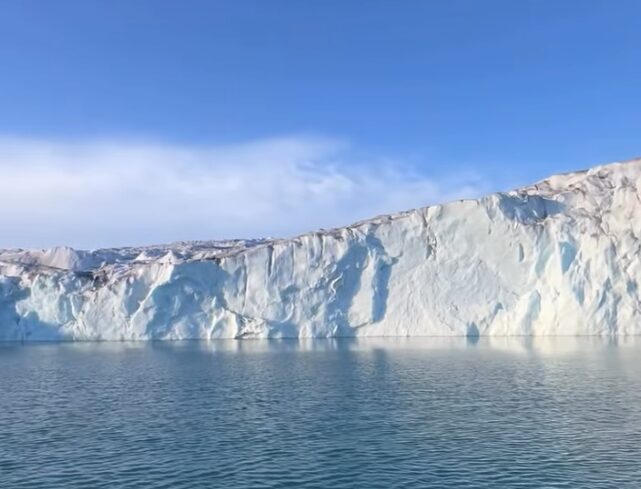
The Ice Sheet lies beyond these access glaciers. Photo: Stafford Tyrell
From there, the team will ski west toward Disko Bay on the west coast, where their five-person boat crew will pick them up in early September.
“We then hope to sail back to Ireland in the middle of September, but if we’re too late, I’ll freeze my boat in the ice in Greenland,” said Tyrrell.
The group is unsponsored, “just 3 guys going for it,” as Tyrrell put it.
Arctic travel has always been expensive, but even more so now in Greenland, under new, stricter insurance rules. The Greenland Expedition Office now requires $139,000 in search-and-rescue coverage for groups like Tyrell’s, and $39,000 or $83,000 for individuals, depending on location, with the higher figure applying north of 78°. Policies must also guarantee direct reimbursement to the Danish or Greenland government for any evacuation, even those caused by negligence.
The tighter requirements have led major insurers like IF Insurance to pull out, leaving expeditions scrambling for alternatives and adding another financial hurdle for small, independent teams.
A scientific journey
French adventurer Matthieu Tordeur, once the youngest to ski solo and unsupported to the South Pole, is back on the Greenland ice with glaciologist Dr. Heidi Sevestre for another science-driven snowkite expedition. Last summer, the pair covered 1,500km from Kangerlussuaq to Qaanaaq, gathering data on snow density and pollution.
